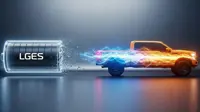Partners' helps make perfect recovery
23 Jan 2014
People improve their performance more when they practice with a partner rather than on their own, according to a new study.
The research could ultimately help people rehabilitating from a stroke.
Scientists from Imperial College London and two Japanese institutions explored whether physical interaction improved the way people performed in a computer-based task where they were using a joystick-like device. They were connected by a virtual elastic band to the same type of device operated by another person, who was hidden from view.
Most of the participants were unaware that they were working with a partner, but in spite of this they subconsciously used information transmitted through their partner's touch to enhance their performance. Participants achieved noticeably better results in the task when working with a partner than they did working on their own.
The researchers are particularly interested in how their findings could help people performing exercises for rehabilitation, for example when recovering from stroke.
Robots are increasingly used for such rehabilitation and physiotherapy and the researchers believe that these robots would be more effective if they could react to patients through touch in the same way that people do. The research could also help people practising sports or other physical activities.
Dr Etienne Burdet, co-author of the study from the Department of Bioengineering at Imperial College London, says, ''They say it takes two to tango and it seems that for physical tasks, practising with a partner really does improve performance. Our study is helping us to understand how touch plays a vital and very subtle role in helping people to transmit information to one another. This was the case in our study even when people couldn't see their partner or feel their partner's skin.''
In the study, the researchers discovered that where one person was physically connected to a partner when learning a task, they consistently improved their performance regardless of how well their partner performed.
Even an intermittent physical connection between partners was found by the researchers to help individuals to learn the task better than subjects who practised the task alone for the same duration.
The team also found that when practising a task, the improvement in performance was most prominent when the partners were at a similar level, and that interacting with peers was more beneficial than working with an expert.
Improvements were most noticeable when the individual was practising with another human and not a robot.
Atsushi Takagi, PhD student and co-author of the study from the Department of Bioengineering at Imperial College London, says, ''Humans are intensely social creatures and it is no surprise that we've developed non-verbal communication techniques to help us improve the way we carry out tasks. Touch is an essential tool in our communication arsenal. It's fascinating that this kind of communication can be so powerful even when people can't see each other. Excitingly, getting robotic devices to mimic this process could help people make bigger improvements when they are carrying out exercises in rehabilitation.''
The team reached their conclusions by carrying out experimental sessions with 68 volunteers who operated a joystick-like robotic device to move a cursor, in an effort to track a randomly moving target on a screen.
Each session consisted of an equal number of single and dual trials. In the single trials each individual performed the tracking alone, while in the dual trials the candidates were connected by a virtual elastic band that connected the hands of the partners during the trial. The sequence of the trials was pre-determined and unknown to the subjects and most of the volunteers did not deduce that they were connected to a partner. Although they could feel the force of their partner during the trial, they were still able to make independent movements.
The research was carried out in partnership with the National Institute of Information and Communications Technology and ATR Computational Neuroscience Laboratories, both in Japan.






.webp)















